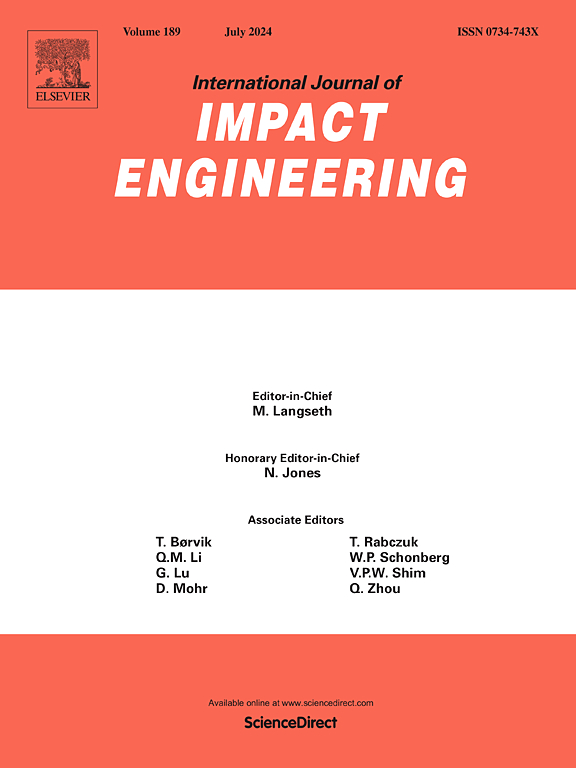Mechanical behavior of porous alumina under quasi-static and dynamic loading
IF 5.1
2区 工程技术
Q1 ENGINEERING, MECHANICAL
International Journal of Impact Engineering
Pub Date : 2025-07-01
DOI:10.1016/j.ijimpeng.2025.105450
引用次数: 0
Abstract
The sensitivity of porous ceramics’ mechanical behavior to strain rate is often attributed, in micromechanical models, to a competition between the loading rate and the crack propagation speed initiated at microstructural defects. However, direct experimental evidence for this phenomenon remains limited. In this study, this competition was investigated by conducting compression and tensile tests across a range of strain rates using Split Hopkinson Pressure Bar set-up on alumina ceramics with precisely controlled microstructures. Porosity was introduced into the alumina matrix with well-defined pore size, morphology, and volume fraction. Three porosity levels (1%, 20%, and 60%) and two pore types (microscopic tortuous and mesoscopic isolated spherical) were used to assess the influence of microstructure on mechanical response under dynamic loading. Results indicate that strain rate sensitivity increases with porosity. However, due to the wide dispersion of results, it is challenging to conclude precisely on the specific effect of pore size. The size of the fragments was then used an indicator of the fragmentation mechanisms occurring during sample fracture. The increase in strain rate leads to an overall reduction in fragment size, reflecting the competition between strain rate and crack propagation velocity introduced by micromechanical models.
准静态和动态加载下多孔氧化铝的力学行为
在微观力学模型中,多孔陶瓷的力学行为对应变速率的敏感性通常归因于加载速率与微观结构缺陷处裂纹扩展速度之间的竞争。然而,这一现象的直接实验证据仍然有限。在这项研究中,通过在精确控制微观结构的氧化铝陶瓷上使用分离式霍普金森压力棒设置,在一系列应变速率下进行压缩和拉伸测试,来研究这种竞争。孔隙率被引入到氧化铝基体中,具有明确的孔隙大小、形态和体积分数。采用三种孔隙度水平(1%、20%和60%)和两种孔隙类型(微观扭曲和中观孤立球形)来评估微观结构对动载荷下力学响应的影响。结果表明,应变率敏感性随孔隙率的增加而增加。然而,由于结果的广泛分散,很难准确地得出孔径的具体影响。然后,碎片的大小被用作样品断裂过程中碎裂机制的指标。应变速率的增加导致碎片尺寸的整体减小,反映了微观力学模型引入的应变速率和裂纹扩展速度之间的竞争。
本文章由计算机程序翻译,如有差异,请以英文原文为准。
求助全文
约1分钟内获得全文
求助全文
来源期刊

International Journal of Impact Engineering
工程技术-工程:机械
CiteScore
8.70
自引率
13.70%
发文量
241
审稿时长
52 days
期刊介绍:
The International Journal of Impact Engineering, established in 1983 publishes original research findings related to the response of structures, components and materials subjected to impact, blast and high-rate loading. Areas relevant to the journal encompass the following general topics and those associated with them:
-Behaviour and failure of structures and materials under impact and blast loading
-Systems for protection and absorption of impact and blast loading
-Terminal ballistics
-Dynamic behaviour and failure of materials including plasticity and fracture
-Stress waves
-Structural crashworthiness
-High-rate mechanical and forming processes
-Impact, blast and high-rate loading/measurement techniques and their applications
 求助内容:
求助内容: 应助结果提醒方式:
应助结果提醒方式:


